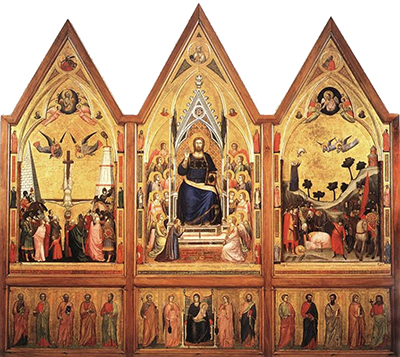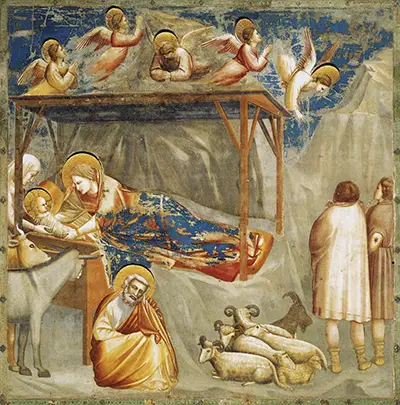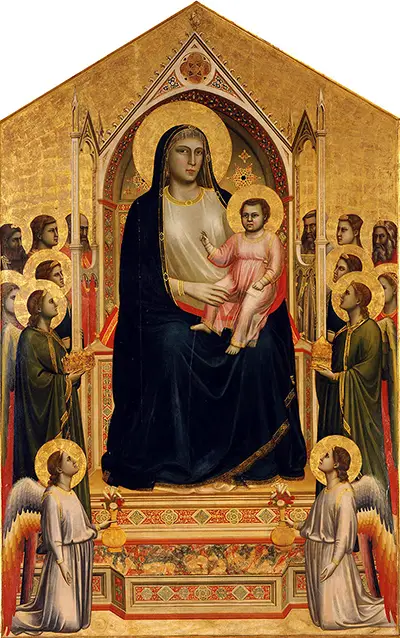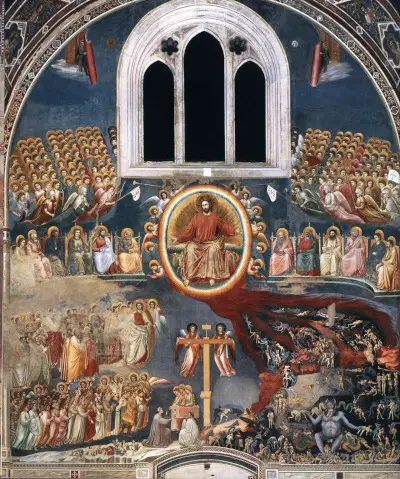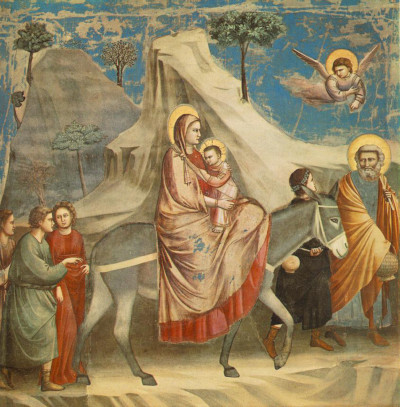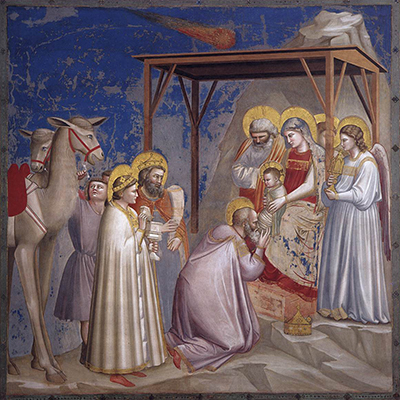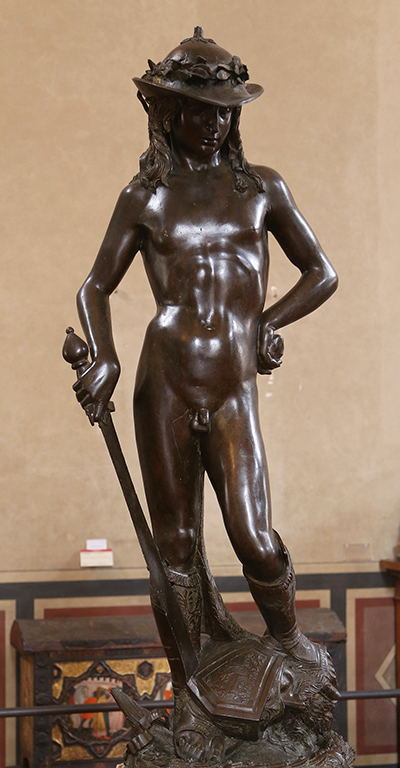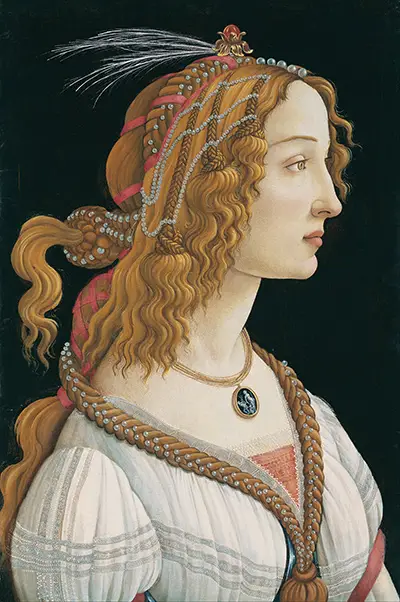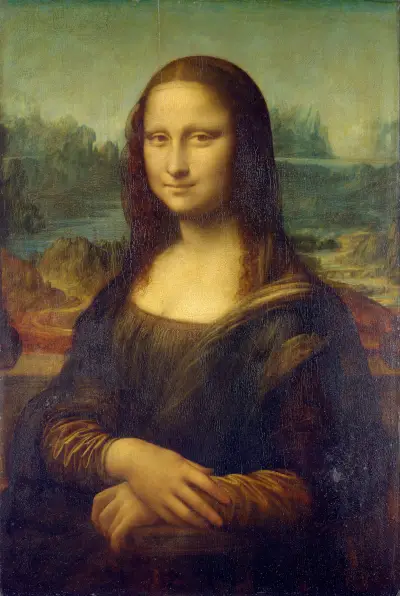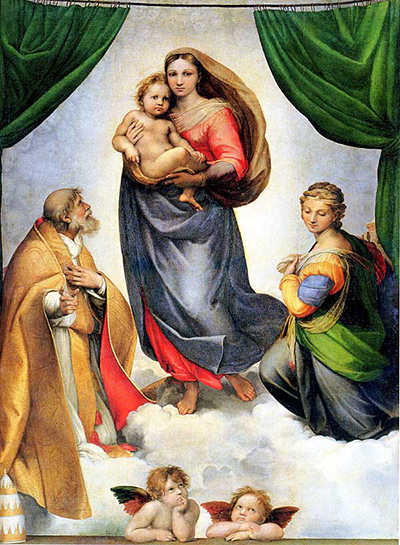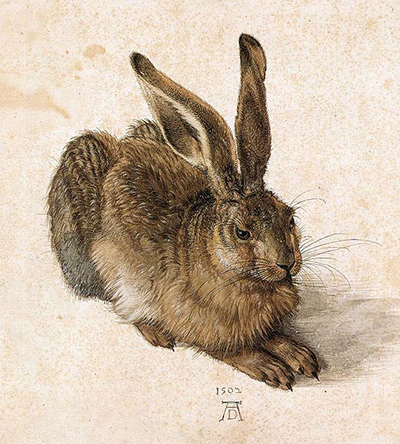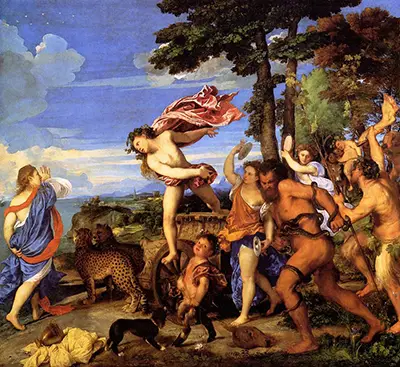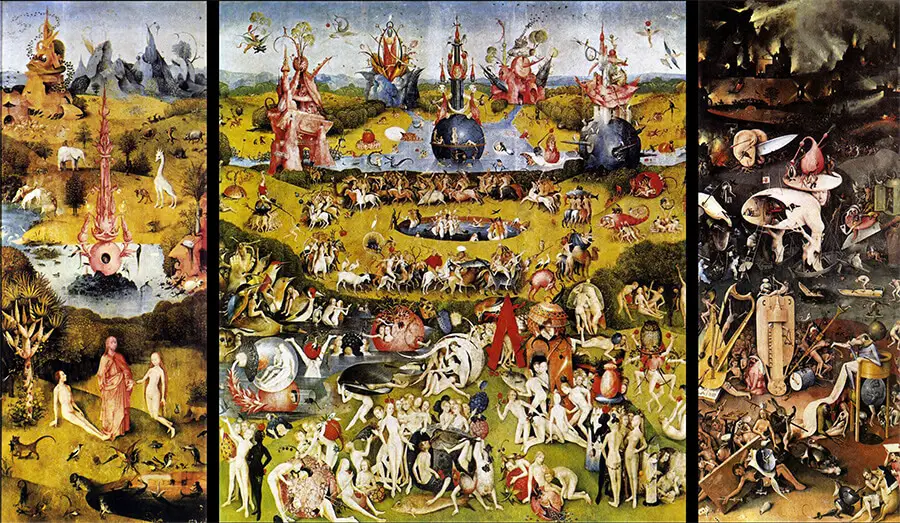Giotto di Bondone produced a depiction of the famous Baptism of Christ as part of his large series of works for the internal walls of the Scrovegni Chapel in Padua.
Composition
The composition is very much in line with the adjoining works, with his mastery of figurative art very much on display, alongside the craggy rock faces and clear blue sky. The artist was able to remain consistent across this large undertaking, even though he made use of a large number of assistants.
Description
We find Christ himself standing centrally, with his palms held open. He is placed slightly below the other figures in the painting, giving an impression of openness and also slightly vulnerability. A small congregation has joined to watch on, though Giotto keeps this layout relatively simple.
Figurative Art
Giotto’s use of figurative art evolved over time. One can compare Baptism of Christ here with his work in Assisi, to see some of these changes occurring over time. His work is better understood when placed in context, against the Byzantine styles which led up to this, where Giotto was able to loosen up and bring emotion into his work.
Giotto’s figures were also more lifelike, and he would consider each one an individual, affording more time to each one. They may have their own unique personalities or behaviors, and it would never be about simply filling empty space.
Size and Dimensions
The Baptism of Christ is sized at 200 cm by 185 cm and this format fitted within the overall tiling of artworks which ran horizontally across the internal walls. Giotto took scenes from the lives of Christ, Joachim and Mary on different rows, with additional motifs placed around the foot of each wall.
Restoration has been an issue within the chapel, and regular work has been required to ensure that the finer details and colors found within this fresco have been preserved for future generations. Fresco art was a delicate practice which was not ideal for the long term, nor was this considered at the time.
Points of Note
Two interesting elements about this painting are the way in which the lower half of Christ is submerged in water, simply by adding a light tone of blue over this part. Additionally, we see divine intervention coming down from the sky, with an arm outstretched within a white flurry of paint and activity.
Conclusion
This interpretation of Baptism of Christ would influence later artists in how to compose and style this famous religious story. It was inevitably chosen by Giotto as a key moment in Christ’s life, and Giotto would have been involved in planning the composition, with some elements completed by his assistants. As a fresco, it would have been completed at speed, to avoid elements being left unfinished once the plaster had dried.
Whilst some of Giotto’s advancements were subtle, he helped to encourage the transition towards the early Renaissance. Perspective and tone would become bolder in the years that followed, with new interpretations of the Baptism moving further away from the ideals of the Byzantine era. Domenico Ghirlandaio in the late 15th century provides an example of that.
More Renaissance Artists



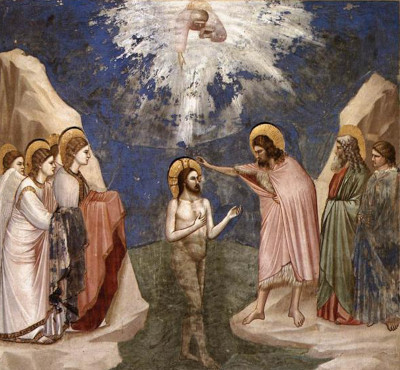
 Giotto.jpg)
 Giotto.jpg)
